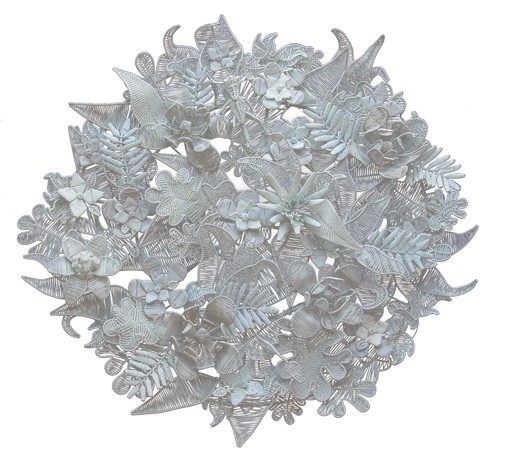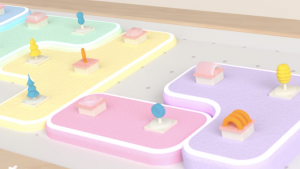From the Series

“Although art, craft and design are historically seen as separate disciplines, our contemporary world is increasingly turning towards a fusion of the traditional with the modern, resulting in an exciting new hybrid pushing the boundaries of new forms, materials, techniques, functions and technologies. This was uncharted territory in the mid 1990s when I started working with local crafters. With the exception of a handful of recognised master crafters using traditional skills and materials, the majority of local craft products were tourist curios of poor quality and lacking innovation.
“Armed with a seemingly opposing combination of skills and experience – socio-political/economic research vs art and fashion design – I did not fit neatly into either world, the one academic and too serious, and the other practical but too frivolous. However, they came together in a new career where both could be applied to a vision that the application of contemporary design and handmade production was the key to growing sustainable incomes at the grassroots.
“Starting my intervention with the least culturally sensitive and little known transitional craft of telephone wire weaving, the first aim was to mentor and push the boundaries of the work of the handful of existing producers, taking it from curio to ‘art craft’. Despite my own design and mentoring input, it was made clear from the outset that authorship was vested in the creator and encouraging individual expression soon led to an elevation in status of this ‘new’ art form. As it took off, a growing number of individuals sought to join the project, which in turn was supported by a global collectors’ market.
“In tandem, pushing boundaries and engaging with modernity even further, Zenzulu was born – a mass-produced contemporary range of handmade vessels where the authorship and intellectual property remains with myself as the originator and designer. Here producers were not previous craft practitioners, but unemployed individuals who were recruited for skills training in a technique more suited to mass production. Based on cottage industry, production is to design specifications and formal quality control is applied, as it would be if it was made by machine in a factory.
“Through seemingly minor interventions, the impact and success of this first ‘project’ has led to sustainable incomes for around 300 individuals. This model is increasingly being applied to development strategies in the craft sector here and in the rest of Africa, where I work as an independent design consultant. After 15 years at the coal face, I am excited by the possibilities and response to my new Nature assemblages. Here I am expanding my own creative work beyond that of ‘art craft’ or ‘design craft’, and how it will be labelled remains to be seen. Rigid categories carry ideological and cultural baggage and are in constant flux, but what remains a constant is that human skill, invention and handwork infuses life into products.”
Fick-Jordaan is the founder of Zenzulu. Her Jungle Platter forms part of her new Nature series of assemblages.







